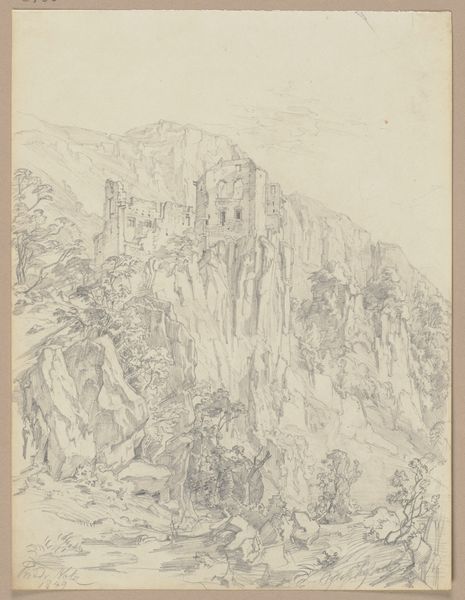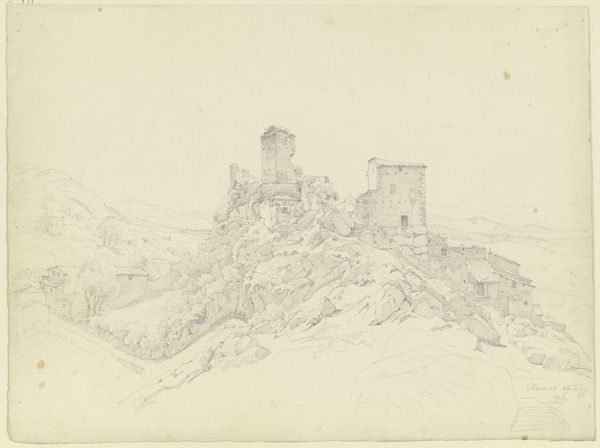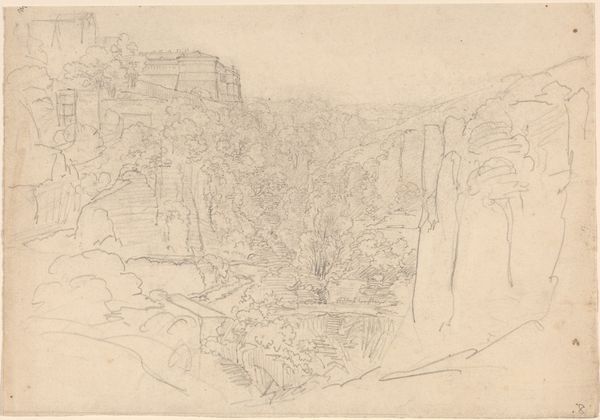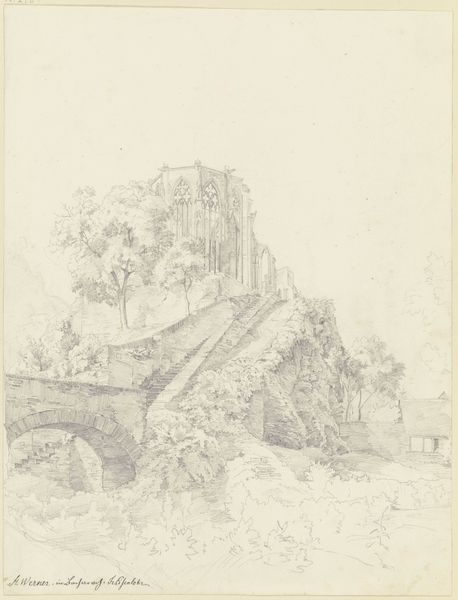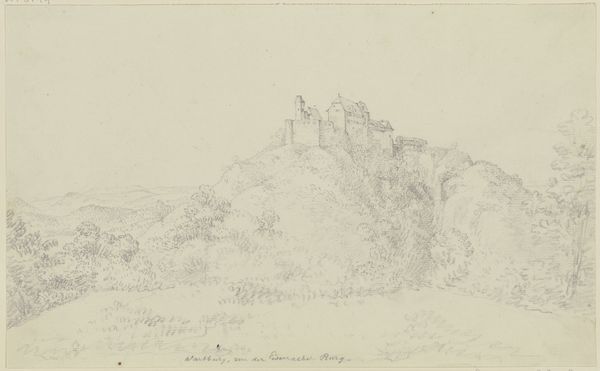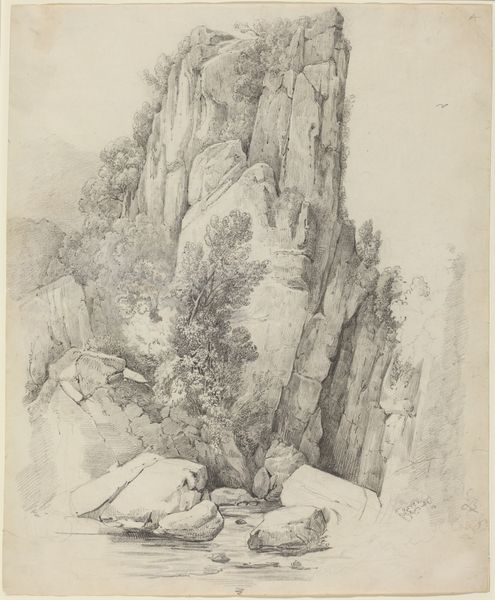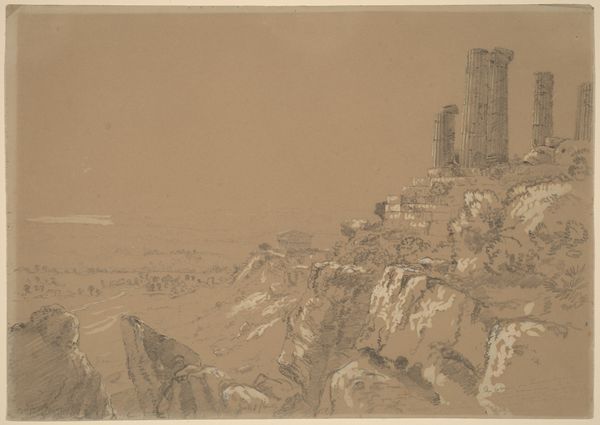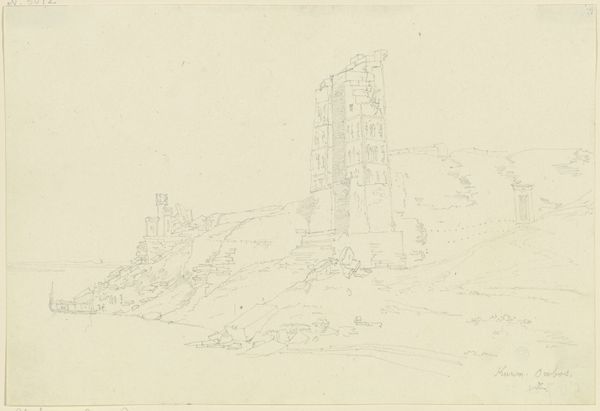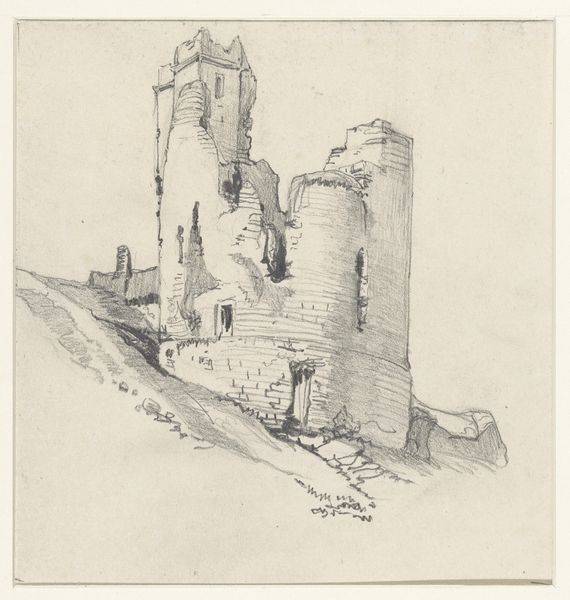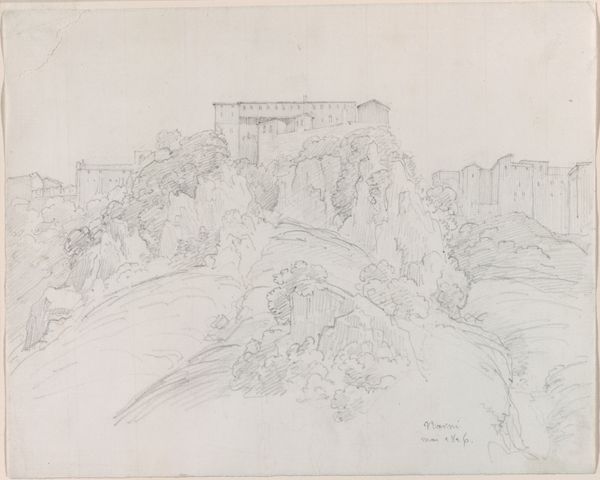
drawing, plein-air, paper, pencil, chalk
#
pencil drawn
#
drawing
#
16_19th-century
#
plein-air
#
pencil sketch
#
landscape
#
paper
#
pencil drawing
#
romanticism
#
pencil
#
chalk
Copyright: Public Domain
Curator: This delicate drawing, rendered in pencil and chalk on paper, is Ernst Fries's "View of Corchiano," created in 1826. Fries, a key figure in early 19th-century German Romanticism, captured this Italian scene en plein air. Editor: There's a dreamlike quality, isn't there? The softness of the pencil, the way the architecture seems to emerge from the landscape itself. It’s like a fortress built by nature. Curator: Absolutely. Fries was part of a broader movement of Northern European artists drawn to Italy. He aimed to capture the essence of the Italian landscape and its historical significance, reflecting a desire to connect with classical ideals. Editor: It makes me wonder about the people who lived there, perched so precariously. Their lives must have been dictated by defense, isolation... This work could provoke a conversation about vulnerability and the human need for security, seen from an intersectional perspective of power and control. Curator: Precisely. While overtly a landscape study, the looming architecture indicates an awareness of societal structure and historical power dynamics. We must also recall how landscapes at the time served as markers of identity and were loaded with nationalist sentiment. Editor: This is something I've seen so much during the COVID-19 pandemic: how architecture serves to separate, exclude, and promote disparity. What would it mean to deconstruct, democratize it, build bridges instead of walls? Even looking at this beautiful rendition, one cannot turn away from the embedded symbolism of protection versus accessibility. Curator: And think of the technical skill: the control of line, the tonal variation achieved with just pencil and chalk. Fries demonstrates a remarkable ability to convey depth and texture, essential for Romantic ideals. Editor: Right, the skill in execution is undeniably beautiful. But by unpacking how the symbolism intersects with sociopolitical realities, even of today, we can avoid reducing this to mere aesthetics. This work becomes less about what we see, and more about seeing beyond it. Curator: It seems even within a tranquil landscape sketch, social history has left its indelible mark, informing not just the past but the present. Editor: A poignant reminder that no image exists in a vacuum. Every stroke has implications that we must examine carefully.
Comments
No comments
Be the first to comment and join the conversation on the ultimate creative platform.
